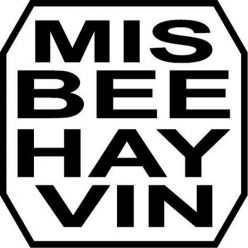By Nate Gross, 19/May/2012
Bio-engineering and especially that which pertains to the creation of GMO foods is at best unwise and at its worst a nightmare waiting to happen. The primary concern over GMO products is in the area of “horizontal gene transfer” wherein some of the modified genes in a plant are transferred to another species. Besides the dangers of this process happening between two species of plant, there is also the danger of a transfer to bacteria, insects, or animals. As these recipients were not the intended target of these gene changes, there is the danger of undesirable or even catastrophic outcomes.
One of the earliest and probably one of the most well known GMO crops is that of the Roundup Ready® soybeans. Roundup is a glyphosate-based toxin that is designed to block a plant’s ability to synthesize an enzyme called 5-enolpyruvyl shikimate-3-phosphate synthetase or EPEPS [1]. This enzyme allows the plant to synthesize aromatic amino acids, without which the plant dies [1].
Roundup was developed and introduced by Monsanto in 1973 [1]. From that time, up to the mid to late 1990s, despite the global widespread use of Roundup, not a single glyphosate-resistant plant had developed [2]. After the introduction of Roundup Ready crops instances of superweeds began to accumulate. These superweeds include Palmer amaranth (2004), Conyza biotypes (2008), Ryegrass, Johnsongrass, and Coca [3].
When Monsanto set out to develop a glyphosate-tolerant seed line they were unable to find a suitable gene from another plant species so they turned to bacteria. It was found that the bacterium Agrobacterium species (strain CP4) had the desired gene sequence [1]. Also, due to the method employed in the gene splicing several other genes were also incorporated. These genes include the “cauliflower mosaic virus 35S promoter, the EPSPS chloroplast transit protein (CTP) sequence from petunias, and the 3′ untranslated region of the nopaline synthetase gene (NOS3′)” [1]. The method Monsanto used to insert the new genes was a bacterial plasmid vector using E. coli bacteria [2]. By using a parasitic gene injection method, they were able to effectively make a chimera. A part plant and part bacteria life form.
Yet another example of horizontal transfer of genetic information is outlined in a 4-year study by Professor Hans-Hinrich Kaatz a German zoologist of the University of Jena’s Bee Institute [4]. His study has yet to be published and he has been reluctant to talk about his research until it has been published in a research journal, but the main topic is as follows [5].
In his study, Professor Kaatz has found evidence that genes used to modify crops can jump the species barrier and cause bacteria to mutate [5]. He looked at GMO oil seed rape and found that genes used to modify the plant had transferred into the genome of bacteria living in the digestive tracks of bees that visited the fields of the modified crops [5]. “The study reveals that novel genes from genetically engineered crops and food may cause changes to take place in the intestinal tracts of people and animals” [4]. The results of which are yet unknown.
In conclusion, the creation and widespread use of GMO crops do have an impact on the environment around them. The results of this impact are yet to be determined. “Genetic engineering creates vast arrays of transgenic DNA that could spread, not only through cross-pollination with the same or related species but also through the direct uptake of the transgenic DNA by cells of unrelated species, a process called horizontal gene transfer” [6]. Playing god is a role we were never intended to play, and a dangerous one at that.
REFERENCES:
[1] “Organic or GMO?,” psrast.org/, [Online]. Available: http://www.psrast.org/subeqau.htm.
[2] L. A. Moran, “Roundup Ready® Transgenic Plants,” Sandwalk, 14 MAR 2007. [Online]. Available: http://sandwalk.blogspot.com/2007/03/roundup-ready-transgenic-plants.html.
[3] “Roundup (herbicide),” Wikipedia, [Online]. Available: http://en.wikipedia.org/wiki/Roundup_(herbicide).
[4] “Gene 48,” Progress, [Online]. Available: http://www.progress.org/gene48.html.
[5] A. Barnett, “GM genes ‘jump species barrier’,” The Guardian, 27 MAY 2000. [Online]. Available: http://www.guardian.co.uk/science/2000/may/28/gm.food?cat=science&type=article.
[6] “Horizontal Gene Transfer from GMOs Does Happen,” Science in Society, [Online]. Available: http://www.i-sis.org.uk/horizontalGeneTransfer.php.
